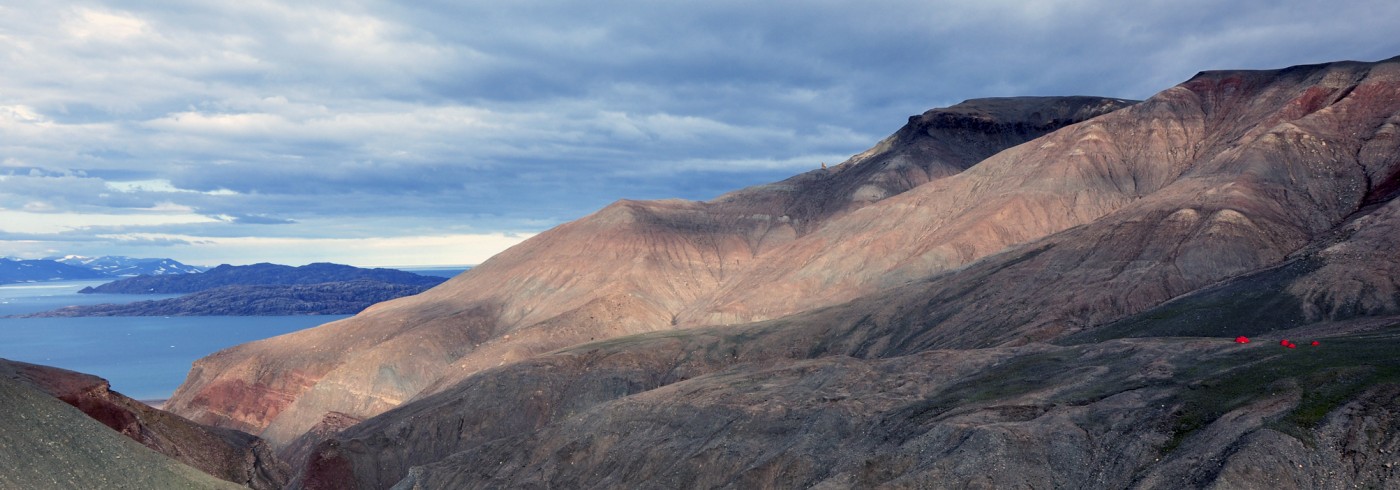We trekked to the far side of Stensiö Plateau today (approximately 4 km) to find an access out onto the north facing cliffs along the coast. We are again trying to locate the “Stegocephalian horizon” to find more fossils of aquatic temnospondyl amphibians. The climb up from the camp passed through the same Anodontophora fassaensis beds that we surveyed days before. A more detailed inspection, however, had located numerous slabs of fine siltstone that were covered in ripple marks, evidence of currents frozen in time for 250 million years
There were also numerous burrowing traces and scratch marks left by worms and small arthropods. A significant discovery was a concretions filled with conchostracans. These are tiny arthropods still found in shallow freshwater ponds today.
The top of the plateau was spectacular. An endless field of flowers, streams and ice all glittering in the sun. We hiked across, sliding down the snow banks until we came to a gap in the high basalt cliff; we had marked this previously on our geological maps and Google Earth satellite images. The slope was steeper than expected, and after slipping and scrambling down part of the way we decided that it was a little too risky to continue. We therefore split the team to work along the nearest ridge and also further along the plateau. Both sites turned out to be rich in trace fossils including burrows and resting outlines of small limulids or Horseshoe crabs.
No more bones were located, but the large collection of trace fossils has confirmed our interpretation that the palaeoenvironment was a very shallow inshore system with considerable freshwater input.
A treat on the walk home was a face-to-face meeting with an Arctic hare. It posed for a few photographs before bounding off.

